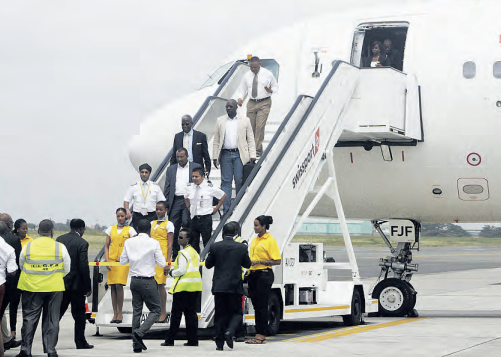
A new African Union report now shows how reforms have made travelling to Kenya harder, thereby reducing tourist volume.
The report on visa openness index ranks Kenya at position 46 of 54 countries, despite President William Ruto’s introduction of the electronic travel authorisation (eTA), which was billed as a game changer.
It shows Kenya is ranked bottom of the chart in the East African region, with Rwanda leading the pack in ease of entry for African visitors.
“A significant number of countries have embraced new technologies and launched processes of digitising the travel and immigration process, which although well-intended, added layers of requirements to the traveller and did not facilitate ease of movement. The introduction of eTAs by some countries is a case in point,” the report by the African Development Bank said.
AfDB used travel information gathered between July and August last year from the International Air Transport Association (IATA).
Like a visa, the report says, eTA only provides permission for the holder to travel to the issuing country, and entry remains subject to the final determination of immigration officials at the border.
Despite the visa difficulties in Kenya, several countries in the continent are making progress in opening up their sky for African travellers, enabling business and labour mobility as well as tourism.
Of 54 countries on the continent, the report says, 17 have improved their visa openness index score over the past year. Twenty-nine countries’ scores remain unchanged compared to 35 in 2023, while eight countries score lower in this edition, compared to four in 2023.
“The net effect of these changes has been a slightly lower aggregate score than in 2023, down from 0.485 ( 2023 ) to 0.479 ( 2024 ). In the context of the visa openness index, this score is on par with 2022, and higher than the aggregate score in the six prior years,” it reads.
The score for a country is calculated by aggregating the individual scores for the country’s visa policy as applied towards the citizens of every African nation.
The methodology differentiates between policies that require travellers to apply for and obtain a visa ahead of travel, where travellers have the option of obtaining a visa on arrival at the port of entry in the destination country, and travel scenarios where entry is permitted without the requirement for a visa.
The index is computed by taking to account various factors and the countries requiring visa before one can visit them are given zero score, those giving visa on arrival are graded as 0.8 while the visa-free ones are given 1.0.

